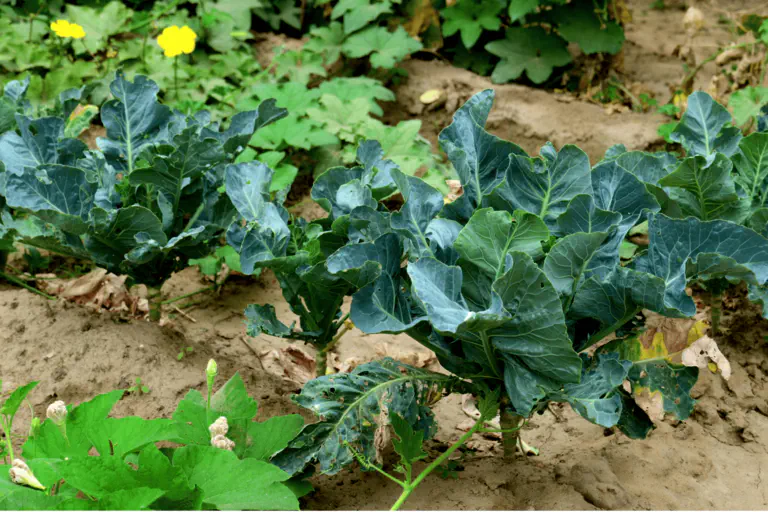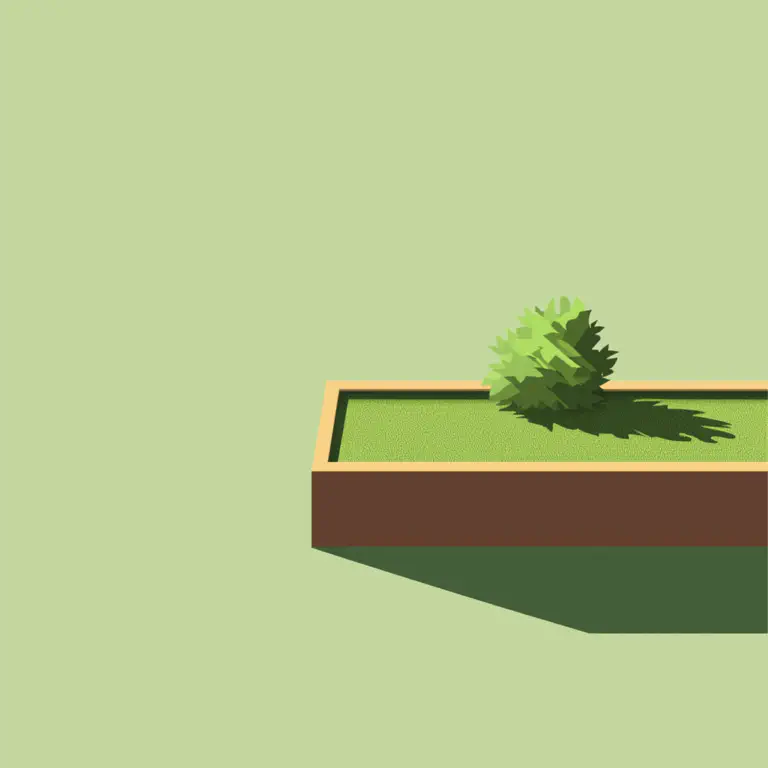A planting plan for successful beds #
If you start planning your beds in spring, you can quickly become overwhelmed. It’s not so easy to keep an overview between planting plan, crop rotation and mixed cultivation. Which plants go together? What should you plant after tomatoes, potatoes or beans? And how do you prevent the soil from becoming depleted over time?
Whether a planting plan for raised beds, vegetable or perennial beds - smart planning has many advantages. In this article, you will learn how to implement a well-thought-out crop rotation, which combinations have proven successful and how digital helpers such as SeaTable can make organization easier for you.
Why is a planting plan important? #
A successful garden doesn’t start with the first seed in the ground, but with a well-thought-out planting plan. Without planning, the soil can quickly become depleted, which will affect plant growth in the long run. Planting the same crops in the same place every year also encourages the proliferation of pests and diseases. The right crop rotation counteracts this: it ensures that the soil is not depleted on one side, but can recover.

A well thought-out planting plan not only makes the garden more productive, but also easier to care for. Match plants with similar nutrient requirements sensibly and use mixed crops that can keep pests away naturally. But what does a well thought-out crop rotation actually look like? This is exactly what we will explain below.
The basics of crop rotation #
Crop rotation means that plants in a bed do not grow in the same place every year, but rotate in a certain order. The main reason for crop rotation is to optimize the use of nutrients in the soil and to avoid diseases and pests that could otherwise accumulate over the years. Traditional crop rotation divides plants according to their nutrient requirements:
- Heavy eaters extract a lot of nutrients from the soil.
- Medium-performing crops need fewer nutrients than high-performing crops.
- Weak growers manage with few nutrients.
- Soil improvers enrich the soil with nutrients, especially nitrogen.
The trick is to rotate the plants in the beds on a 3- to 4-year cycle. This keeps the soil fertile and allows you to reduce the use of fertilizer. It also helps to keep pests and plant diseases at bay, as their preferred host plants do not grow permanently in the same place.

Note: An ever-flowering bed can logically be planned in the planting plan without any crop rotation at all. If you want to create a planting plan for your ever-flowering bed, you should make sure to combine plants with different flowering times in order to balance the nutrient uptake over the season. For example, a planting plan for a perennial bed (sunny, dry) may include lavender, sage and yarrow, while a planting plan for hydrangeas in the bed design should include humus-rich and moist soil.
Tips for creating your own planting plan #
To make crop rotation for vegetables work, you need a clear plan. These steps will make it work:
- Divide and document beds: Determine how many beds or cultivation areas you have. It is best to number them or create a sketch - digitally on a whiteboard.
- Group plants according to nutrient requirements: Categorize your vegetables as heavy feeders, medium feeders, weak feeders and soil improvers. This way you know which plants should grow when and where.
- Determine the rotation principle: A simple system is the 4-field rotation, in which the plants move one row of beds forward each year. The exact procedure is explained below.
- Consider mixed cultivation: Not all plants get along equally well. Therefore, integrate companion plants that strengthen each other, such as carrots and onions, as the onions keep carrot flies away.
- Record the planting plan and adjust it annually: Document your planting sequence to avoid mistakes and make optimizations. Digital tools such as SeaTable help you to keep track.

Practical examples of effective crop rotation in your garden #
A good crop rotation for strawberries and other plants is easy to put into practice if you divide the beds sensibly and combine the right plants. Here are some examples of different bed sizes and requirements that show how rotation works over several years.
Example 1: Classic 4-field cultivation** #
This system is particularly suitable for larger gardens with several beds. Each year, the plants rotate one position further so that the soil is never overworked. In the fifth year, the cycle starts all over again, which means, for example, that after beans in the crop rotation, it is the turn of heavy eaters such as potatoes.
- Year 1: High-yielding crops (e.g. potatoes, tomatoes, cabbage, pumpkin)
- Year 2: Medium eaters (e.g. carrots, onions, spinach, peppers)
- Year 3: Weak eaters (e.g. radishes, herbs, lamb’s lettuce, peas)
- Year 4: Soil improvers (e.g. beans, clover, phacelia, green manure)

Example 2: Planting raised beds (annual plan) #
Not everyone has space for four large beds. But even on a small area, you can use crop rotation by dividing your bed into sections or using mixed crops. A raised bed planting plan for beginners should contain simple crops that require little care and are well suited to gradual crop rotation. A sensible raised bed planting plan will then help you to make optimum use of the space and maximize yields.
- Year 1: Tomatoes and basil + radishes to fill the gaps
- Year 2: Carrots and onions (good mixed crop against pests)
- Year 3: Spinach and lettuce as a weak crop
- Year 4: Beans for nitrogen enrichment, then the cycle starts again
Example 3: Crop rotation for balcony gardeners (annual plan) #
Crop rotation can also be implemented in planters on balconies, for example. The main aim here is to keep the soil fertile by regularly renewing the substrate or adding compost.
- Year 1: Peppers and tomatoes with basil as a companion plant
- Year 2: Carrots or lettuce as a mid-season crop
- Year 3: Herbs such as thyme, mint or parsley as weak growers
- Year 4: Beans or clover as soil improvers

Digital support: Create a planting plan with SeaTable #
If you write down by hand every year what has been planted where, you can quickly lose track. This is exactly where the no-code platform SeaTable can help you - a digital solution that allows you to manage your planting plans clearly and optimize them in the long term. Instead of struggling with chaotic notes or Excel spreadsheets, you can record beets, plant species and crop rotations in a structured way and adapt them flexibly.
The planting plan in SeaTable is structured in such a way that each row of beds has its own row and the plants for the coming years are entered in separate columns. This means you can always see which crop is currently growing and what should follow next year. Color coding can help you to differentiate between the categories of strong growers, medium growers, weak growers and soil improvers at a glance. You can also add additional notes - for example on crop yields, weather conditions or pest infestation.
What makes SeaTable particularly practical is that you can not only plan in tabular form, but also create a crop sketch directly in the integrated whiteboard plugin. This allows you to see immediately where which vegetables are growing. Thanks to simple links, you can connect beds with the plants you have planted with just one click - without any complicated formulas. And because you can also create your own app in SeaTable without any programming knowledge, you can adjust your planting plan directly in the garden and enter changes immediately.
A major advantage of digital documentation is that it is easy to adapt. For example, if a crop rotation turns out to be unfavorable for your tomatoes or new findings emerge, you can change the plan with just a few clicks. SeaTable not only allows you to organize your vegetable beds, but also to efficiently structure a perennial bed planting plan - including flowering times and location requirements. In addition, a digital overview prevents you from accidentally planting plants in the same place where they grew in previous years.
Conclusion & tips for successful crop rotation #
A well-thought-out planting plan with crop rotation is the key to healthy beds and a high-yield harvest. The targeted alternation of strong, medium and weak eaters keeps your soil fertile, diseases and pests have fewer opportunities and the nutrients are optimally utilized. If you plan your beds strategically, you can garden more sustainably and benefit from better yields year after year.

To ensure that crop rotation for potatoes and co. works smoothly in practice, it is worth following a few basic rules. You should document and adapt your planting plan every year to avoid mistakes and to control the rotation of crops in the best possible way. It also helps if you regularly improve the soil with compost, mulch or green manure so that it remains nutrient-rich in the long term. Mixed crops can also be a valuable addition to your bed**, as certain plants protect each other from pests and promote growth. For example, tomatoes combine well with basil, while onions next to carrots keep pests away.
Flexibility is another important factor: if a crop does not grow well or fails, you should adjust your plan without neglecting the principles of crop rotation. Digital tools such as SeaTable can help you keep an overview and easily track past years. This not only allows you to organize the crop rotation table optimally, but also to see which combinations were particularly successful in the long term. If you follow these tips, you can manage your beds efficiently and benefit from healthy plants and a rich harvest year after year.
TAGS:
